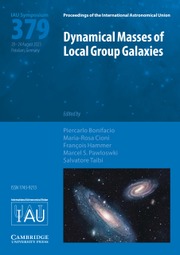Article contents
Revisiting the helium abundance in globular clusters with multiple main sequences
Published online by Cambridge University Press: 23 April 2010
Abstract
For nearby K dwarfs, the broadening of the observed Main Sequence at low metallicities is much narrower than expected from isochrones with the standard helium–to–metal enrichment ratio ΔY/ΔZ~2. A much higher value, of order 10, is formally needed to reproduce the observed broadening, but it returns helium abundances in awkward contrast with Big Bang Nucleosynthesis. This steep enrichment ratio resembles, on a milder scale, the very high ΔY/ΔZ estimated from the multiple Main Sequences observed in some metal-poor Globular Clusters. We argue that a revision of low Main Sequence stellar models, suggested from nearby stars, could help to reduce the overwhelmingly high ΔY/ΔZ deduced so far for those clusters. Under the most favourable assumptions, the estimated helium content for the enriched populations may decrease from Y ≃ 0.4 to as low as Y ≃ 0.3, with intermediate values being plausible.
Keywords
- Type
- Contributed Papers
- Information
- Proceedings of the International Astronomical Union , Volume 5 , Symposium S268: Light Elements in the Universe , November 2009 , pp. 129 - 134
- Copyright
- Copyright © International Astronomical Union 2010
References
- 1
- Cited by


